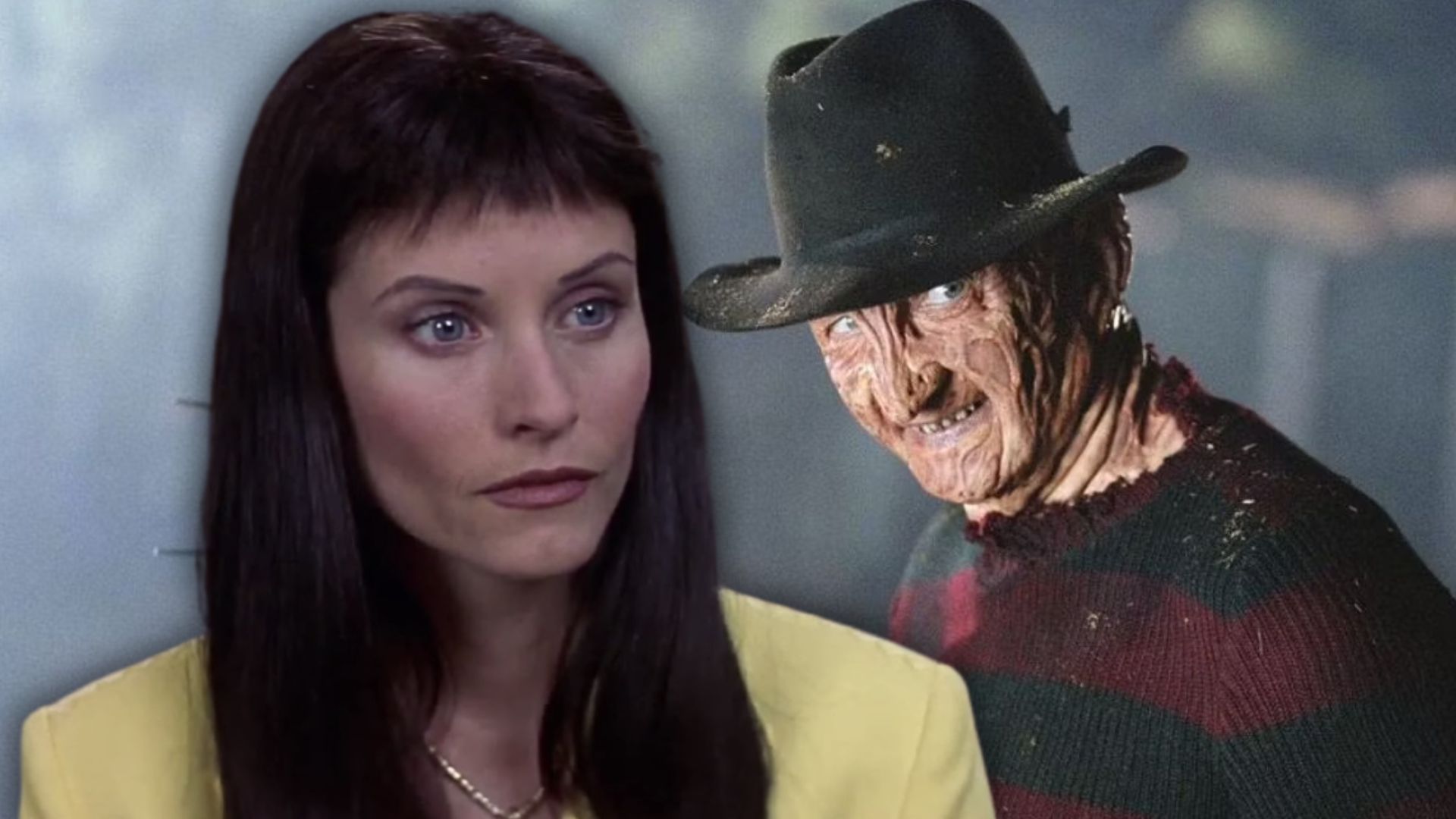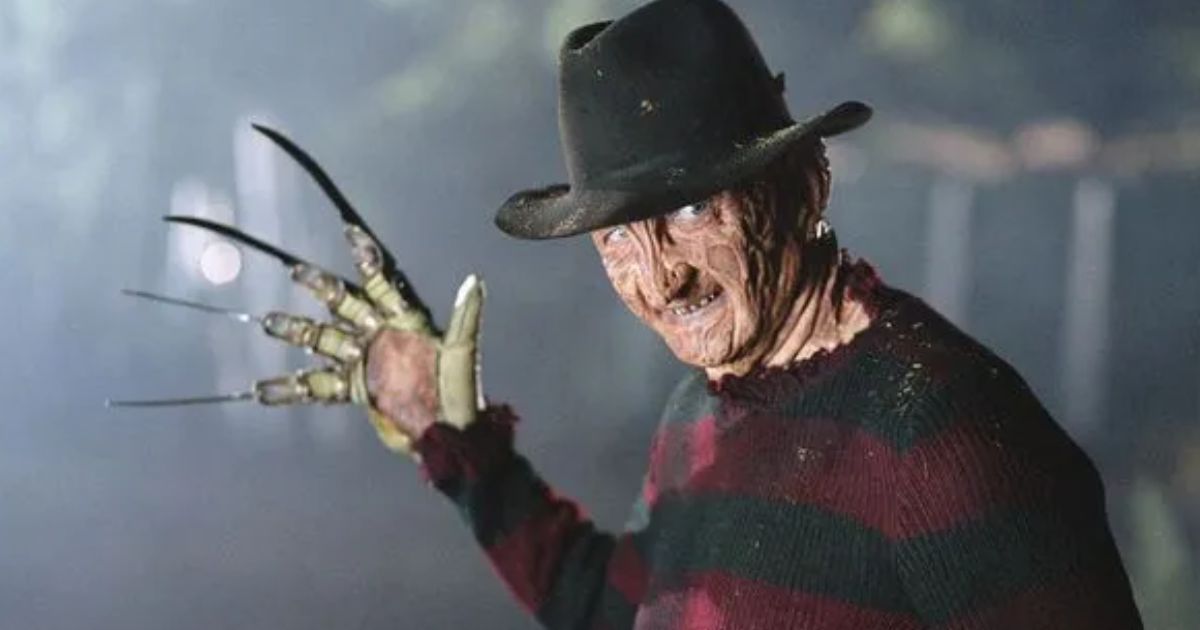Horror master Wes Craven’s A Nightmare on Elm Street is one of the most beloved franchises in the genre, and its famous slasher villain, Freddy Krueger (Robert Englund), is equally beloved. Since it has remained undeniably popular in the 40 years since the first film’s release, it is hard to believe that Craven had a difficult time trying to get the project picked up. All the major studios balked at the premise, claiming they didn’t think audiences would find dreams scary enough. Luckily, New Line eventually gave the movie the greenlight, thus giving birth to one of horror’s most iconic franchises.
Despite being made on a lower budget, the movie became a big success and catapulted Freddy into horror icon status. The surprise success of the movie paved the way for seven sequels, a crossover with fellow horror icon Jason Voorhees, a remake, a video game, a TV series, and countless merchandise. The movie remains a staple viewing for horror fans and Freddy a frequent costume for Halloween parties and bar crawls. Now in the social media age, Freddy is often seen in viral parody videos with fellow horror villains such as Ghostface, Michael Myers, Pennywise, and more.
Although the reception of each movie has varied and certain elements have been changed over the years, the one thing that remains constant throughout the franchise is the easily recognizable score. Specifically, Freddy’s freaky nursery rhyme, also known as Freddy’s Song. The song is instantly recognizable, but where did it come from?
The Purpose of Freddy’s Song
Aside from Freddy’s menacingly sharp razor glove, one of the most recognizable elements of NOES is the music, specifically the nursery rhyme sung about Freddy. The creepy rhyme is almost always played with the visuals of young children playing jump rope, usually little girls. None of the movies in the franchise have explicitly stated who the children are, but it is commonly accepted among fans that they are the ghosts of Freddy’s past victims. A few of the movies have confirmed, however, that the song is meant to repel Freddy and warn his new potential victims.
In the third installment of the franchise, Dream Warriors, Nancy (Langenkamp) tells fellow Freddy victim Kristen Parker (Patricia Arquette) that the song is used to ward off the boogeyman. When the rhyme is heard, it’s a clear indication that Freddy is on his way to invade the local teens’ nightmares. The song implies that the town of Springwood is still haunted by Freddy’s presence.
Since Freddy was a child murderer before he became a dream entity, it makes sense that the rhyme is sung by school-aged children often playing jump rope. The use of little kids singing this already creepy song gives it an even more unsettling feeling whenever it is played.

Related
9 Actors Who Were Considered for A Nightmare on Elm Street
Check out all the casting what-ifs from your favorite horror franchise, A Nightmare on Elm Street.
How the Song Came to Be
Created in a joint effort between Wes Craven, Heather Langenkamp’s boyfriend, and composer Charles Bernstein, Freddy’s unnerving nursery rhyme was a labor of love. The lyrics to the song were actually written by Craven while he was writing the script for the film. It was inspired by the classic nursery rhyme “One, Two, Buckle My Shoe” and Langenkamp’s former musician boyfriend developed the melody on the piano. Bernstein then littered the theme throughout the movie to create a cohesive musical score.
Once the lyrics were written and the melody adjusted, the now iconic song was ready to be used as one of the main musical components of the film. With multiple people creating the song, it has an eerie, unsettling, and dissonant sound to it that mirrors the menacing presence that Freddy brings to the dream world. It has since been used in every movie in the franchise in some capacity, often played more than once.
When the Song Is Played in Each Movie
Freddy’s song is an integral part of the NOES franchise. It is played in every film of the franchise, including the 2010 remake. The first time it’s heard is at the beginning of the first movie, when Nancy and her best friend Tina (Amanda Wyss) are walking to school. It’s played one more time in the final scene of the movie when Freddy’s spirit takes control of Glen’s car.
In the second movie, Freddy’s Revenge, the song is featured in a dream sequence and is sung by a character who is still alive, while playing jump rope. Dream Warriors also features the song being sung by children playing rope, although these children are confirmed to be past victims of Freddy’s from before he died. The song is sung again by Kristen as she tries to resist being sedated by her doctors in the hospital.
All the other films feature the same song, usually sung by kids playing jump rope. Only two movies feature the song with slightly different lyrics. In the fifth installment, The Dream Child, the final line of the song is changed from “Nine, ten never sleep again” to “Nine, ten, he’s back again”. The same lyric change was featured in the version of the song that plays in the 2010 remake.
The only other movie not to use the imagery of kids jumping rope is the sixth installment, The Final Nightmare. That movie depicts Springwood as a desolate, childless town where the only parents remaining have been driven mad by the loss of their children. Instead, the lyrics are written in numerous places throughout Springwood.

Related
14 of the Best Horror Ripoffs of A Nightmare on Elm Street
Like most film franchises, a long list of imitators try to leech off of their success. A Nightmare on Elm Street has plenty of them.
What Makes Freddy’s Song Iconic
Many horror franchises feature recognizable scores, such as Halloween or The Shining, and many horror films have used children singing creepy songs in an even creepier manner. Nevertheless, it can be argued that no horror film or franchise has created a song as iconic as Freddy Krueger’s nursery rhyme. Sure, Halloween may have the more recognizable overall musical score. The Rocky Horror Picture Show may have more popular songs. Still, Freddy’s Song in NOES is iconic for both the music and the lyrics. The song has been a part of horror pop culture for 40 years and is still put on nearly every Halloween playlist or used in memes.
Something that makes it stand out against other horror themes or songs is that the warning lyrics are sung against a melody that is supposed to be innocent. The message of the song warns kids and teenagers that Freddy is coming after them in their dreams to murder them. Yet the song is sung to the tune of a rather harmless, fun children’s rhyme. Singing a warning about a child killer who murders kids in their sleep to the tune of a happy nursery rhyme is something that will likely stick out to most people.
The use of the song in dream sequences also emphasizes how no one is safe, even in their sleep. Freddy turns a normal human practice that is thought of as an escape from the pressures of life into a full-fledged nightmare where if you die in your dream, you die in real life. Paired with the visuals of school children happily skipping rope with fairytale-esque cinematography, the nursery rhyme becomes even creepier.
Source link

















Add Comment